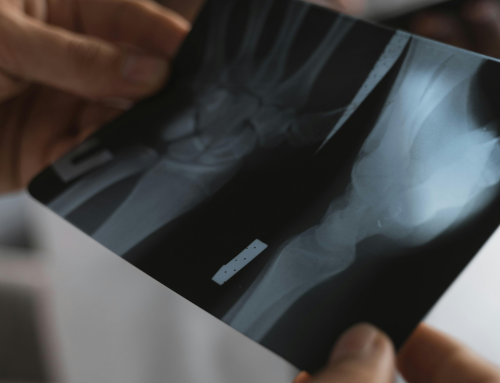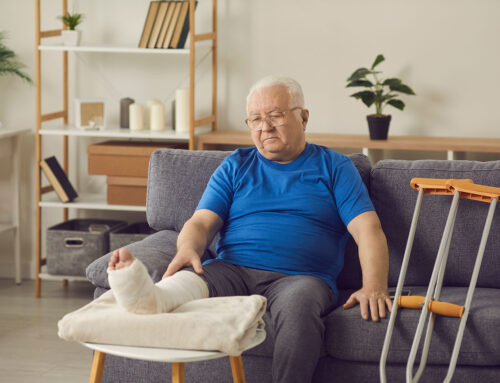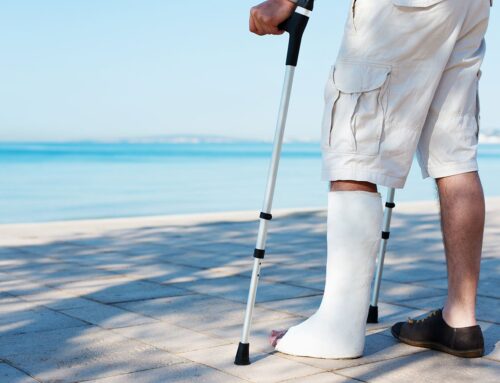When discussing bone health, topics such as diet, exercise, and genetics often take center stage. However, one aspect often overlooked is the vital role of posture. Our alignment and the way we hold our bodies have a profound effect on our overall bone health, influencing not only our skeletal system but also our mobility, strength, and overall well-being.

The Anatomy of Posture
Posture refers to how we hold our bodies when we sit, stand, or move. It is primarily governed by the musculoskeletal system, which includes the bones, muscles, and connective tissues that keep us upright and moving.
Good posture aligns the body so that the least amount of strain is placed on muscles and ligaments during movement or weight-bearing activities. On the other hand, poor posture places additional stress on these structures, leading to various health issues over time, including compromised bone health.
The Posture-Bone Health Connection
The connection between bone health and posture runs deep. It's a complex interplay, with each factor influencing and being influenced by the other. Here's how:
1. Bone Strength and Structure
Posture can directly impact bone strength and structure. A properly aligned body encourages even weight distribution, minimizing undue stress on any specific bone or joint. However, poor posture can cause an uneven weight distribution, leading to abnormal bone wear and increasing the risk of conditions like osteoarthritis.
2. Balance and Falls
Good posture contributes to better balance, reducing the risk of falls. Since falls can lead to fractures, particularly in those with compromised bone health, maintaining good posture is a preventive measure against such incidents.
3. Spinal Health
Chronic poor posture can lead to spinal issues like kyphosis (an exaggerated forward rounding of the back), which can compress the spine and lead to reduced mobility and pain. Maintaining good posture ensures spinal health, preserving mobility and overall bone health.
The Role of Activity: Boosting Posture and Bone Health
Physical activity is a potent tool that can simultaneously improve posture and enhance bone health. Here's how:
Strengthening Muscles
Muscles play a significant role in maintaining posture. Regular exercise, particularly strength training, builds strong, resilient muscles that can support and maintain proper alignment of the bones.
Enhancing Flexibility
Flexibility exercises can help loosen tight muscles and increase your range of motion, which can aid in improving posture and preventing the stiff, hunched position that can negatively impact your spine and other bones.
Promoting Bone Density
Weight-bearing exercises, such as walking or weight lifting, stimulate bone-forming cells and help maintain or increase bone density, a vital component of bone health.
Steps Towards Improved Posture and Bone Health
Understanding the connection between posture and bone health is the first step. The next is taking action. Here are some steps you can take:
1. Posture Awareness
Become aware of your posture throughout the day, whether you're sitting at your desk, standing in a queue, or involved in physical activity. Try to correct any slumping or slouching.
2. Regular Exercise
Incorporate both strength and flexibility exercises into your routine. Yoga and Pilates can be particularly beneficial for improving posture, building strength, and increasing flexibility.
3. Ergonomic Setup
If you work at a desk, ensure your workspace is ergonomically designed to promote good posture. This setup includes a chair with good back support, a desk at an appropriate height, and a computer screen at eye level.
4. Regular Check-ups
Routine check-ups can help detect any early signs of posture problems or bone health issues, ensuring timely intervention and treatment.
5. Professional Guidance
Consider consulting a physical therapist or a qualified fitness professional. They can assess your posture, provide personalized exercise regimens, and guide you on how to move correctly to improve alignment and protect bone health.
The link between posture and bone health offers a powerful insight: you have the ability to influence your own bone health. By paying attention to your posture and staying active, you are taking tangible steps to promote your skeletal health and overall well-being.
The power of good posture extends far beyond aesthetics. It's an integral component of your health, affecting everything from your bone strength to your balance, mobility, and even your mood and energy levels. When you stand tall, you're not just benefiting your bones but also paving the way for a healthier, more vibrant life.
The journey towards good posture and bone health is a marathon, not a sprint. Every small change you make today will compound over time, leading to big differences in the long run. So, stand tall, move often, and remember - your bones are the foundation upon which your entire body is built. Treat them kindly, and they'll carry you confidently throughout your life's journey.
When you suffer from a fracture, it can become challenging to maintain good posture or a regular exercise routine during the healing process. Does this mean you must sit tight until things are back to normal? Not exactly. Canadians are taking charge of their injury with a self-treating low-intensity pulsed ultrasound device. Contact our experts to learn more about the technology that helps patients heal 38% faster today.





